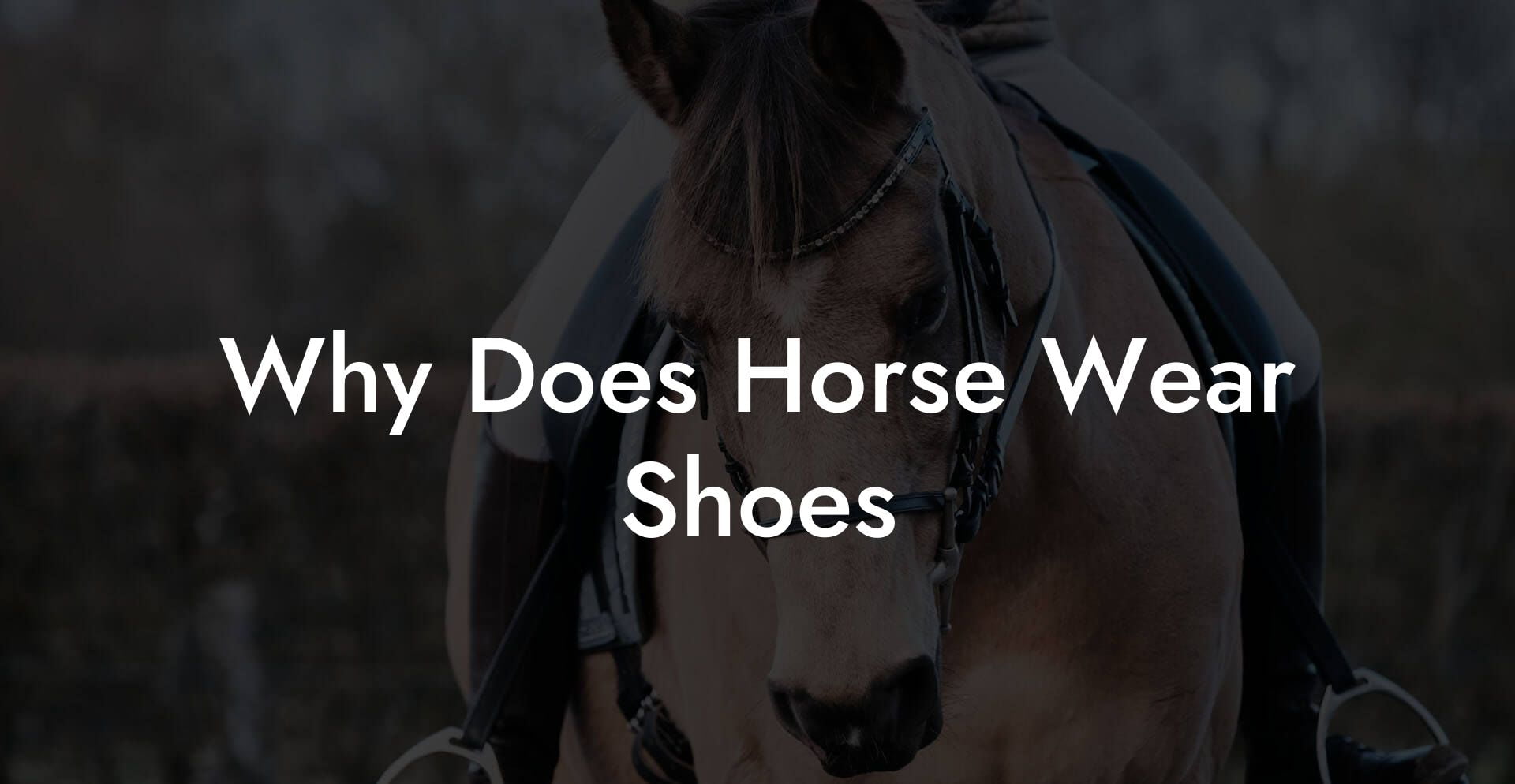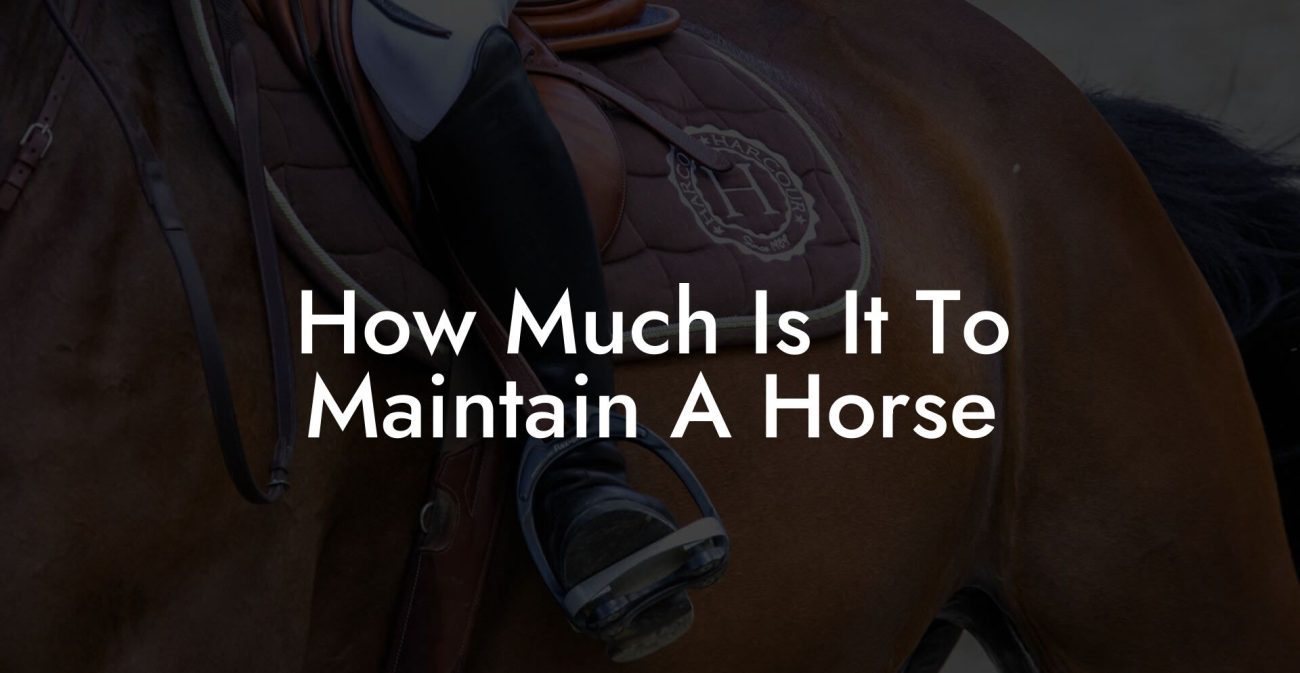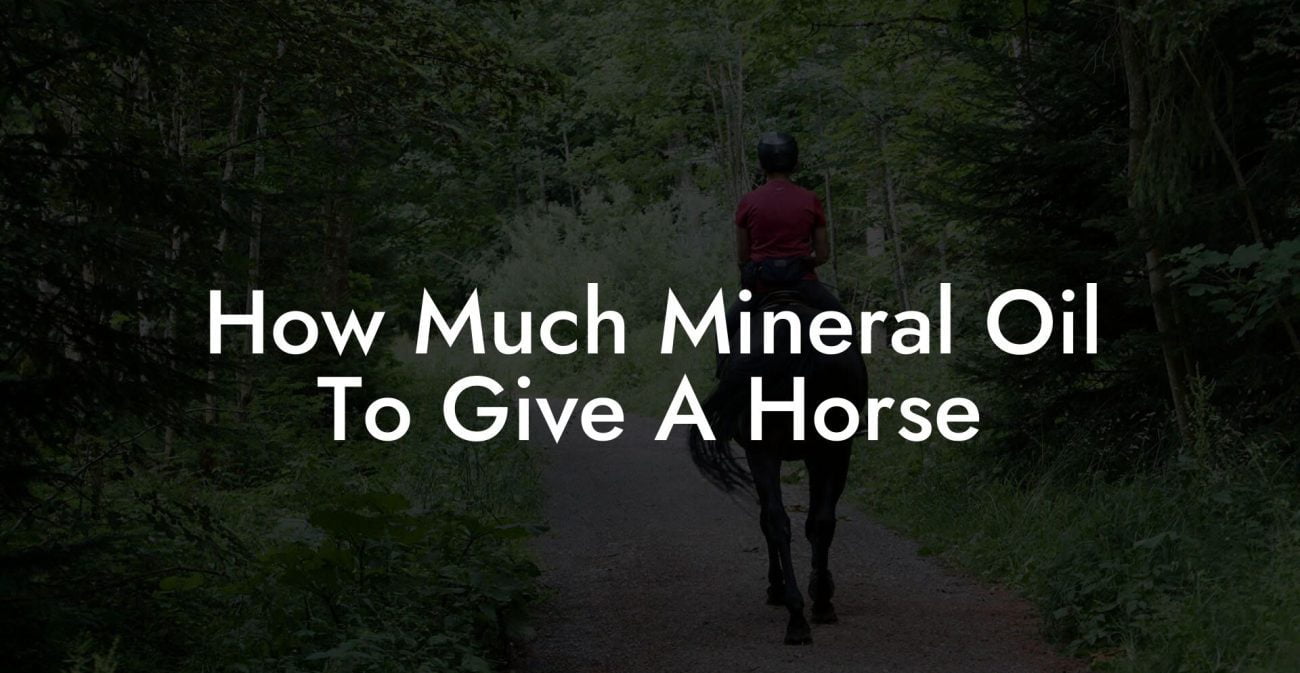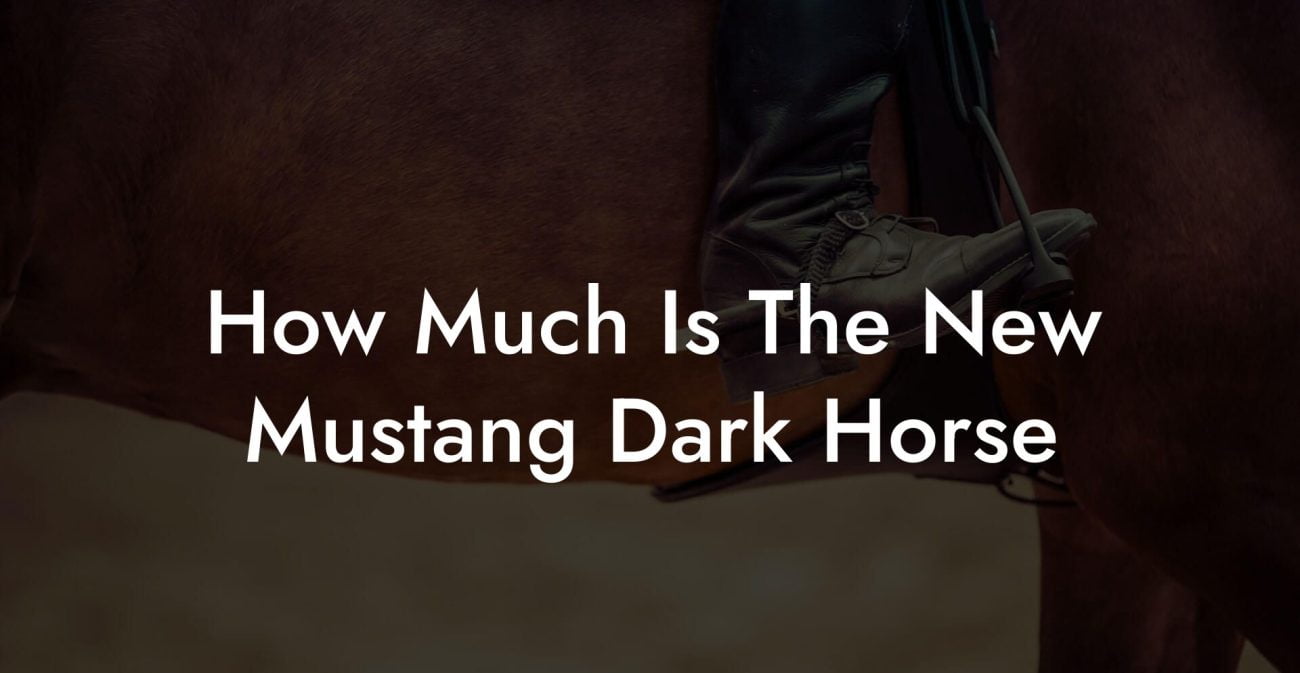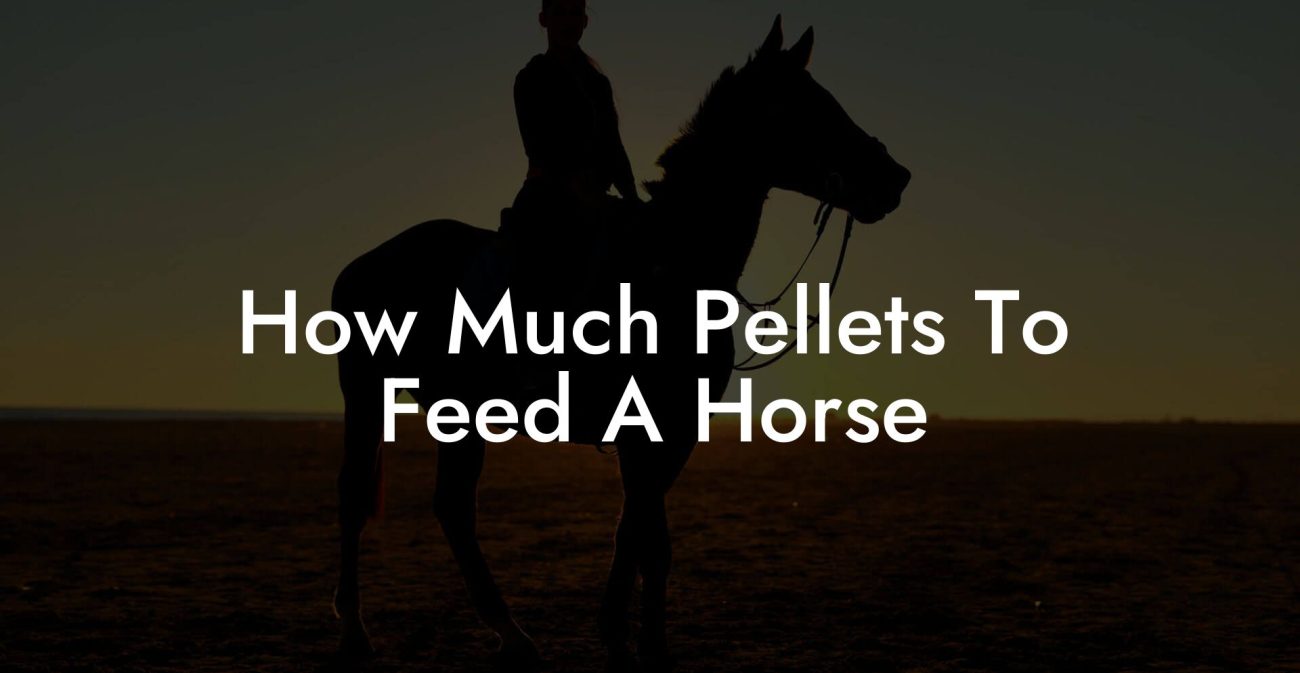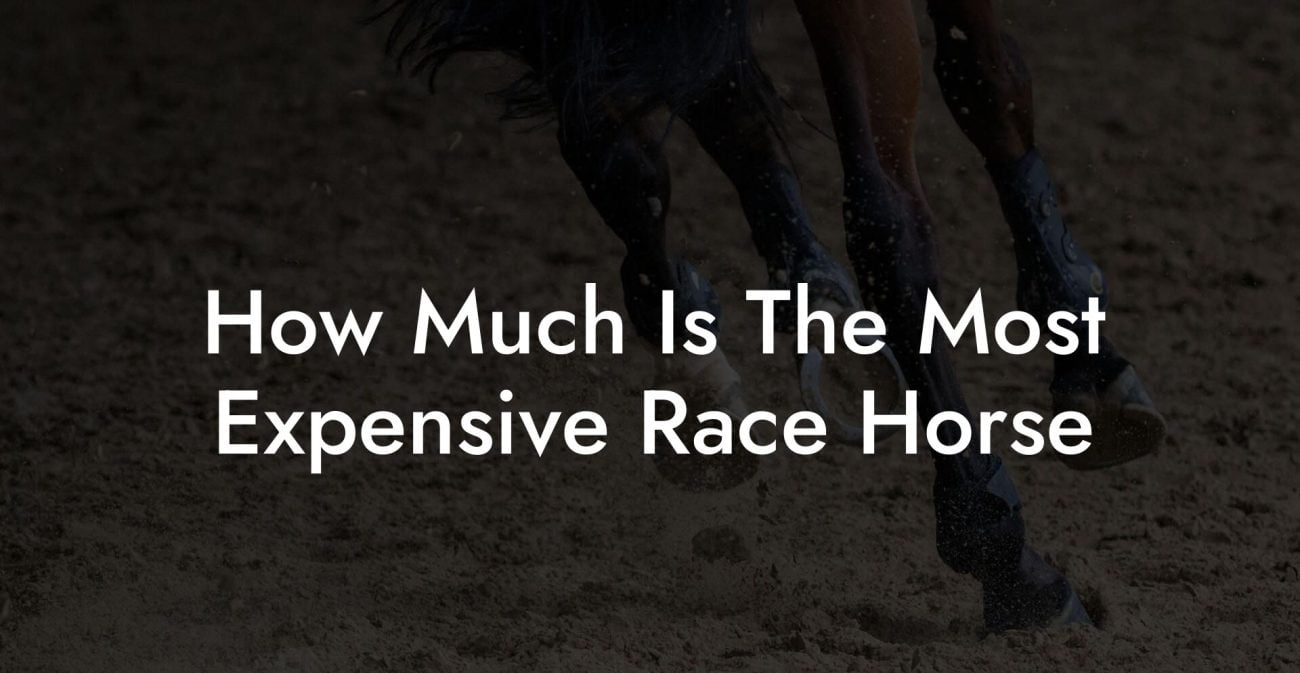Who knew that equine footwear could spark a revolution in how we think about hoof care? When you see a horse trotting along in its flashy metal boots, it’s more than just a style statement, it’s a centuries-old tradition with a modern twist, blending practical care with a dash of eccentric coolness. Get ready to dive into the surprisingly edgy world of horseshoes and discover why our majestic four-legged friends depend on them for protection, performance, and a touch of flair.
Quick Links to Useful Sections
- The Legacy of Horse Shoes: A Journey Through Time
- So, Why Does a Horse Wear Shoes?
- The Role of Farriers: The Unsung Heroes of Equine health
- Inside the Shoe: Types and Technologies in Equine Hoof Care
- Standard Horseshoes
- Bar Shoes
- Egg Bar Shoes
- Heart Bar Shoes
- Specialized Therapeutic Shoes
- Beyond the Metal: Hoof Care 101 for the Modern Horse Owner
- Debunking Myths: Common Misconceptions About Horse Shoes
- Myth 1: All Horses Need Shoes
- Myth 2: Horses Are Uncomfortable With Shoes
- Myth 3: More Expensive Shoes Mean Better Quality
- Myth 4: Shoe Changes Are Only for Performance Horses
- Embracing Alternatives: The Barefoot Movement in Equine Care
- Modern Innovations in Equine Hoof Care
- Resources and Community Support: Your Next Steps
- Behind the Scenes: A Day in the Life of a Farrier
- Future Trends: The Next Frontier in Equine Hoof Care
- Crafting a Personal Hoof-Care Routine: Tips and Tricks for Horse Owners
- Step 1: Schedule Regular Farrier Appointments
- Step 2: Develop a Daily Hoof-Exam Routine
- Step 3: Stay Informed and Connected
- Step 4: Tailor Nutrition to Support Hoof Health
- Step 5: Invest in Technology
- Equine Hoof Health Success Stories: Real-Life Transformations
- Integrating Sustainable Practices in Horse Shoeing
- Integrative and Holistic Approaches FAQs: Your Equine Hoof-Care Questions Answered
- Your Journey to Equine Excellence: Step Up Your Hoof-Care Game
The Legacy of Horse Shoes: A Journey Through Time
Picture this: it’s a brisk day in medieval Europe, and horses are the ultimate mode of transportation, the original ride-or-die before cars even existed. Early horse enthusiasts and farriers (that’s horse shoe experts, for those in the know) discovered long ago that the safety and longevity of a horse’s hooves were directly tied to the power of metal. From ancient Rome to the rugged battlefields of the Middle Ages, horseshoes emerged as a revolutionary invention that allowed horses to brave rocky terrains, slippery roads, and the unpredictable wild.
The practice of shoeing horses evolved gradually throughout the centuries. Initially, people experimented with different materials, leather, rawhide, and even wooden cleats, until high-quality metal became the standard. This transformation was driven by the need for durability, enhanced traction, and the prevention of hoof damage from harsh surfaces. Over time, innovations in metallurgy and craftsmanship refined the design and application of horse shoes, ensuring that each shoe was not just utilitarian, but also a symbol of care and tradition.
Today, though modern equine care has seen many advancements, the essential philosophy behind horseshoes remains: to protect the hoof, assist in performance, and contribute to a horse’s overall well-being. Whether you’re a seasoned equestrian, a casual horse lover, or just a curious onlooker, understanding this legacy offers a fascinating glimpse into the world where history meets high-tech hoof care.
So, Why Does a Horse Wear Shoes?
At its core, shoeing a horse is all about protecting one of its most vital assets, the hooves. Just like sneakers for your feet that cushion every step and shield you from sharp objects, horse shoes are designed to defend the hooves from wear and tear. But there’s more to it than meets the eye. Here are some key reasons why horses wear shoes:
- Hoof Protection: Natural wear and tear from constant movement over rough, paved, or rocky surfaces can harm hooves. Shoes act as a protective barrier, reducing abrasion and preventing cracks or splits.
- Traction and Stability: Whether it’s racing on a track or trotting on uneven terrain, shoes with special treads or designs give horses better grip, ensuring stability and minimizing the risk of slipping.
- Corrective Support: Some horses have unique hoof problems or conformational issues. In these cases, specially designed shoes or modifications can help correct gait abnormalities, reduce discomfort, and improve overall movement.
- Performance Enhancement: Horses involved in sports or heavy work often require extra support to maintain peak performance. Custom-fit shoes help maintain an even balance, reducing fatigue and enhancing efficiency.
- Weather Adaptation: In extreme weather conditions, like frozen grounds or extremely hot asphalt, shoes act as an insulation layer, protecting the hoof from temperature-induced damage.
In essence, horseshoes are not just about style (although they do have that old-school bling factor) but are a critical tool in ensuring the longevity and comfort of a horse. They embody a blend of tradition, veterinary science, and modern engineering all rolled into one protective accessory.
The Role of Farriers: The Unsung Heroes of Equine health
Enter the farrier: part blacksmith, part veterinarian, and all heart when it comes to equine care. Farriers are skilled professionals dedicated to the art and science of horse shoeing. They possess a deep understanding of hoof anatomy, along with the technical know-how to design and apply a shoe that perfectly suits each horse’s unique needs.
A farrier’s work is a delicate balancing act that involves trimming, balancing, and maintaining the hooves while crafting or fitting custom shoes. This process requires precision, an artistic touch, and a genuine passion for horses. Their job is not only about applying a protective covering but also about ensuring that the horse’s movement remains natural and pain-free.
Farriers work closely with veterinarians, trainers, and horse owners to manage various conditions such as laminitis, navicular syndrome, and other hoof-related issues. Their in-depth knowledge and personalized care often make the difference between a healthy, thriving horse and one that struggles with discomfort and mobility challenges.
Additionally, farriers are indispensable when it comes to preventive care. Regular check-ups and routine trimming keep the hooves in excellent shape, ensuring that any emerging problems are addressed before they become serious. For the modern equestrian community, the farrier is more than just a craftsman, they’re a trusted partner in the ongoing journey of equine health.
Inside the Shoe: Types and Technologies in Equine Hoof Care
Just as smartphones come in various models with unique features, horseshoes have evolved into a diverse array of types, each designed for specific needs and conditions. Here’s a look at some of the most common and innovative types of shoes that keep horses trotting in style:
Standard Horseshoes
The classic horseshoe is a U-shaped metal plate that protects the hoof’s underside while offering a solid grip on various surfaces. Most horses will need standard shoes during their working years and for those that regularly face hard or abrasive surfaces.
Bar Shoes
Bar shoes are similar to standard shoes but include a solid bar across the bottom. This design provides additional support and protection, especially useful for horses with uneven hoof walls or those recovering from certain hoof injuries. They help distribute pressure more evenly and reduce the risk of hoof cracks.
Egg Bar Shoes
Designed primarily for horses with navicular syndrome or chronic hoof pain, egg bar shoes feature a curved, egg-shaped support that gently cradles the hoof. The design aims to improve weight distribution and reduce stress on the sensitive areas of the hoof. For many horses, this type of shoe can mean a drastic improvement in comfort and performance.
Heart Bar Shoes
Often used as a corrective measure for horses with specific hoof problems, heart bar shoes encircle a portion of the hoof to offer additional stabilization. They are particularly beneficial for horses suffering from laminitis or other inflammatory conditions, providing an extra layer of protection against the painful effects of the disease.
Specialized Therapeutic Shoes
The world of equine hoof care is ever-evolving, and today’s farriers are increasingly turning to specialized therapeutic shoes. These shoes might include materials such as rubber or polymers integrated with traditional metal components for improved shock absorption and flexibility. The goal is to mimic the natural biomechanics of a barefoot horse while still offering the necessary protection and support.
Technology is also making waves in the form of custom-fitted shoes, designed using 3D imaging and computer-aided design (CAD) software. These innovations allow for precision tailoring to each horse’s unique hoof shape, ensuring maximum comfort and performance.
From the battle-tested classics to cutting-edge modern designs, the array of horseshoe options available today means that every horse can enjoy the perfect blend of protection, performance, and comfort.
Beyond the Metal: Hoof Care 101 for the Modern Horse Owner
riding high on social media and loved by millennials and Gen-Z alike, horses have become a symbol of freedom, strength, and tradition. But owning a horse isn’t just about Instagram-worthy photos, it’s also about understanding their unique needs, particularly when it comes to hoof care. Here are some foolproof tips to keep your horse’s hooves in prime condition:
- Regular Maintenance: Schedule a farrier visit every 4-6 weeks. This isn’t an arbitrary number, it’s the sweet spot that helps prevent overgrown hooves and ensures any developing issues are spotted early.
- Clean and Inspect: After every ride, take a few minutes to clean your horse's hooves. Look for any signs of cracks, chips, or foreign objects. Early detection of these issues can prevent costly problems down the line.
- Balanced nutrition: A balanced diet isn’t just for keeping your horse’s coat shiny. It also plays a crucial role in hoof health. Ensure your horse’s diet is rich in biotin, zinc, and omega fatty acids, all of which contribute to strong, resilient hooves.
- Hydration is Key: Adequate water intake helps maintain the natural moisture balance in the hooves. Dehydration can lead to brittle hooves that are more susceptible to cracking.
- Exercise and Rest: While exercise promotes healthy circulation and hoof strength, rest is equally important to prevent overuse injuries. Balancing activity with proper rest ensures your horse’s hooves get the recovery time they need.
Keeping up with hoof care isn’t just about following traditions, it’s about using a modern, proactive approach to ensure that your horse is comfortable, agile, and always ready for the next adventure. Whether you’re into competitive equestrian sports or enjoy leisurely trail rides, a well-cared-for hoof is your horse’s ticket to a life of active, pain-free movement.
Debunking Myths: Common Misconceptions About Horse Shoes
Dive into the spirited world of equine care, and you’re bound to encounter some myths about horse shoes that can leave even the most seasoned enthusiasts scratching their heads. Let’s put on our fact-checking hats and debunk a few of the most persistent misconceptions:
Myth 1: All Horses Need Shoes
Not every horse is in need of metal boots. Horses with naturally strong and well-maintained hooves can thrive in a barefoot environment, much like that trend in human minimalist footwear. In fact, many horse owners are choosing natural hoof care methods as long as their horse’s lifestyle and terrain allow it.
Myth 2: Horses Are Uncomfortable With Shoes
Contrary to popular belief, a properly fitted horseshoe is like a custom-tailored sneaker, it enhances comfort and performance. Horses do not feel the shoe itself; they feel the protection and support, which in most cases translate to improved mobility and less strain on their hooves.
Myth 3: More Expensive Shoes Mean Better Quality
While premium materials and advanced technologies can offer benefits, the effectiveness of a horse shoe largely depends on the skill of the farrier and the individual needs of the horse. A well-fitted, standard shoe applied by an experienced farrier can often outperform a more expensive alternative that isn’t tailored to your horse.
Myth 4: Shoe Changes Are Only for Performance Horses
Whether your horse is a racehorse, a working ranch steed, or a backyard companion, regular check-ups and appropriate shoeing are vital. Even horses that lead a relatively sedentary life can experience hoof problems if left unattended. Routine maintenance is key to a happy, healthy hoof.
These debunked myths remind us that equine hoof care is as much an art as it is a science, relying on personalized attention and regular maintenance. The goal is not to blindly follow trends, but to make informed decisions based on the specific needs of your horse.
Embracing Alternatives: The Barefoot Movement in Equine Care
Just as some of us are ditching high-heeled shoes in favor of comfort sneakers, a growing number of horse owners are experimenting with the barefoot approach. The idea is simple: let the horse’s hooves function naturally without the constraints of metal shoes. Advocates of the barefoot movement argue that, in the right conditions, hooves can become stronger and more resilient on their own.
However, the barefoot approach isn’t a one-size-fits-all solution. The success of this method depends on factors such as the horse’s environment, workload, and innate hoof strength. Transitioning a shoe-wearing horse to barefoot care requires patience, close observation, and oftentimes guidance from an experienced equine veterinarian.
What’s important to understand is that whether a horse is shod or goes barefoot, the focus remains on proper hoof care, nutrition, and maintenance. The debate isn’t about which approach is universally better; it’s about finding what works best for each unique animal. For some horses, a robust pair of shoes ensures protection on rough terrain, while others thrive without them when given the proper care. The ultimate goal is to optimize hoof health, performance, and, of course, the comfort of your equine friend.
Modern Innovations in Equine Hoof Care
Welcome to the cutting edge of hoof care, where tradition meets technology! In today’s equine world, the integration of digital tools and modern materials is transforming how we care for horses’ hooves. Gone are the days when shoeing was solely an artisanal skill, now, high-tech advancements have entered the barn.
One of the most exciting developments is the use of 3D scanning and computer-aided design (CAD) to create custom-fit horseshoes. By analyzing the precise contours of a horse’s hoof, farriers can design shoes that fit like a glove. This precision not only enhances comfort but also helps distribute pressure more evenly, reducing the risk of injury.
Furthermore, innovative materials such as advanced polymers and shock-absorbing compounds are being incorporated into horseshoe designs. These materials offer superior cushioning without sacrificing durability, making them ideal for performance horses and those with sensitive hooves.
These technological strides empower both farriers and horse owners to make smarter, data-driven decisions about hoof care. With better imaging, materials, and design processes, the art of shoeing is steadily evolving into a science that slots perfectly into the modern equine care toolkit.
Resources and Community Support: Your Next Steps
If you’re feeling inspired to up your equine hoof care game or simply want to connect with others who are as passionate about horses as you are, you’re in luck. The equestrian community is vast, dynamic, and full of valuable resources. From online forums and social media groups to local riding clubs and farrier workshops, there’s a wealth of information just waiting to be tapped.
Start by following popular equestrian influencers on platforms like Instagram and TikTok, where experts share practical tips and behind-the-scenes looks at farrier workshops. Many professionals also host live Q&A sessions, allowing you to ask all those burning questions, like how to choose the right shoe for your horse’s unique needs.
Don’t underestimate the power of in-person interactions either. Many stables, vets, and farrier services offer free consultations, workshops, and clinics. These gatherings are fantastic opportunities to gain firsthand knowledge, network with industry insiders, and even learn some nifty hoof-care hacks.
Another excellent resource is the wealth of online articles, podcasts, and YouTube channels dedicated to equine health and hoof care. These platforms not only provide educational content but also share inspiring real-life stories of horses and owners who have transformed their practices through better hoof care.
In today’s digital era, the community support you need is at your fingertips. Whether you’re embarking on your first barefoot journey or need advice on the latest high-tech horseshoe, connecting with fellow enthusiasts can provide the insights and encouragement to take your equine care to the next level.
Behind the Scenes: A Day in the Life of a Farrier
Ever wondered what it’s like to be a farrier? Imagine a day filled with the clanging of metal, the rhythmic sound of a hammer, and the satisfying snap of a perfectly fitted horseshoe. Farriers are true craftsmen, blending art with precision.
A typical day starts in the early morning when appointments are scheduled, and horses are herded into the stable. With a dedicated toolkit in hand, the farrier carefully examines each horse’s hooves, checking for signs of wear, imbalance, or injury. Whether it’s trimming overgrown hoof walls or sculpting a corrective shoe, every task is performed with meticulous care.
Throughout the day, farriers often switch roles, acting as trusted consultants, offering expert advice to worried owners, and sometimes even troubleshooting unexpected hoof problems. Their job goes beyond crafting shoes; it involves understanding each animal’s story, lifestyle, and physical needs.
This behind-the-scenes glimpse into a farrier’s life underscores the dedication and passion required in equine hoof care. Every strike of the hammer contributes to a horse’s comfort and performance, making the farrier an indispensable part of the equestrian community.
Future Trends: The Next Frontier in Equine Hoof Care
Looking ahead, the future of horseshoes and hoof care is as exciting as it is innovative. Researchers, veterinarians, and farriers are constantly exploring ways to leverage technology to create even better solutions. Imagine shoes that change color to indicate stress on the hoof, or smart sensors embedded in the shoe that track a horse’s gait and performance in real time!
The rise of wearable technology for horses opens the door for data-driven approaches in hoof care. By monitoring complex metrics such as pressure distribution and impact forces during movement, farriers can fine-tune their craft with unprecedented precision. These insights not only help in preventing injuries but also in customizing care regimes tailored specifically to each horse's lifestyle, whether it’s for high-performance sports or leisurely trail riding.
With sustainability also in the spotlight, expect to see more eco-friendly materials being used in horseshoe manufacturing. Advances in metallurgy and material science are paving the way for durable, lightweight, and environmentally conscious designs that perfectly balance nature and technology.
In this era of innovation, one thing remains clear: the future of equine hoof care will continue to blend old-school craftsmanship with state-of-the-art technology, ensuring that horses remain not only stylishly shod but also pampered with the most advanced care possible.
Crafting a Personal Hoof-Care Routine: Tips and Tricks for Horse Owners
Building a personalized plan for your horse’s hoof care is key to ensuring they stay comfortable, healthy, and ready for any adventure. Here are some practical steps to help you craft your own routine:
Step 1: Schedule Regular Farrier Appointments
Consistency is everything when it comes to hoof care. Work with a trusted farrier to establish a maintenance schedule that fits your horse’s activity level and environment. Regular check-ups allow for early detection of any issues, ensuring that your horse’s hooves are always in top condition.
Step 2: Develop a Daily Hoof-Exam Routine
Whether you’re a multi-tasking millennial or a busy Gen-Z equestrian, a quick daily inspection of your horse’s hooves can make all the difference. Look for any visible signs of damage, dirt, or irritants. Clean and moisturize when necessary to maintain optimal hoof health.
Step 3: Stay Informed and Connected
The world of equine care is constantly evolving with new insights and techniques. Participate in online forums, subscribe to equestrian newsletters, and attend local workshops. Engaging with a community of like-minded enthusiasts not only boosts your knowledge but also provides invaluable support.
Step 4: Tailor Nutrition to Support Hoof Health
Just like us, horses benefit from a diet rich in essential nutrients. Ensure your horse’s feed includes the right balance of vitamins and minerals like biotin, zinc, and omega fatty acids. These nutrients contribute to stronger, more resilient hooves.
Step 5: Invest in Technology
Consider incorporating technology into your routine. From smart stable sensors that track environmental conditions to apps that remind you of farrier visits, a little tech can go a long way in ensuring your horse is always at its best.
By crafting a personalized hoof care routine that merges regular professional care with daily maintenance and ongoing education, you’ll not only shield your horse from potential issues but also foster a deeper, more rewarding bond with your equine companion.
Equine Hoof Health Success Stories: Real-Life Transformations
Sometimes, the best way to understand the importance of proper hoof care is through the real-life experiences of others. Across the globe, countless horse owners have witnessed dramatic improvements in their horses’ performance and comfort after making thoughtful changes in their hoof care routines.
Take the story of Bella, a spirited trail rider who began experiencing frequent hoof cracks after increasing her riding sessions on rocky terrains. After consulting with a dedicated farrier and transitioning to a customized shoe regimen paired with a nutrient-rich diet, Bella transformed from a horse struggling with chronic discomfort to a confident and agile companion who now reigns as the star of every local trail ride.
Or consider Duke, a gentle giant whose hooves were once plagued by recurring problems due to overgrown growths. With regular farrier visits, the implementation of a precise trimming schedule, and the introduction of high-tech corrective shoes, Duke’s quality of life greatly improved. His owner now marvels at how a few proactive changes can spark a complete turnaround in equine performance.
These success stories serve as powerful reminders that a commitment to hoof care is an investment in your horse's health and happiness, transforming challenges into triumphs through a blend of expertise, innovation, and genuine care.
Integrating Sustainable Practices in Horse Shoeing
Sustainability isn’t just a buzzword, it’s becoming a cornerstone in every industry, and equine hoof care is no exception. Farriers and equine care professionals are increasingly embracing eco-friendly practices to reduce waste and minimize their environmental footprint.
From the use of recycled metals in horseshoe manufacturing to innovations in biodegradable hoof care products, sustainability is influencing every step of the shoeing process. Many modern farriers are also training in holistic, natural hoof care techniques that reduce reliance on artificial components without sacrificing performance or protection.
As a horse owner, you can contribute to these sustainable practices by choosing farriers and products that prioritize environmental responsibility. This not only benefits your horse but also supports a healthier planet, aligning with the values of today’s eco-conscious generations.
Integrative and Holistic Approaches FAQs: Your Equine Hoof-Care Questions Answered
Check out these frequently asked questions that debunk common doubts and provide insights into the world of horseshoes and hoof care:
1. Why do horses wear shoes?
Shoes primarily protect the hoof from wear and tear, improve traction on various surfaces, and offer corrective support for horses with unique hoof needs. They act as a safeguard against environmental hazards while enhancing overall performance.
2. Do all horses need shoes?
Not necessarily. Some horses with strong, healthy hooves thrive fabulous in a barefoot state. The decision depends on factors such as the horse’s workload, terrain, and individual hoof condition.
3. How often should a farrier check my horse’s hooves?
Regular farrier visits are essential, typically every 4-6 weeks, to ensure the hooves remain well-maintained, properly trimmed, and free from any developing issues.
4. Can shoes help with hoof-related problems?
Yes, specialized shoes can address and correct issues such as uneven wear, laminitis, or navicular syndrome by distributing pressure evenly and providing extra support where needed.
5. Are there any modern alternatives to traditional horseshoes?
Absolutely. Many owners are exploring the barefoot approach or using innovative, custom-fitted shoes made with advanced materials and design technology that mimic natural hoof biomechanics while providing protection.
6. Does shoeing a horse cause discomfort?
When done correctly by a skilled farrier, shoes should not cause any discomfort. In fact, proper shoeing often alleviates pain caused by hoof damage or uneven surfaces.
7. What are the benefits of sustainable shoeing practices?
Sustainable practices in shoeing help reduce environmental waste and promote more natural, eco-friendly hoof care methods, which can benefit both the horse and the planet.
8. How can technology improve hoof care?
High-tech innovations like 3D scanning, CAD-designed shoes, and smart sensors can provide custom-fit solutions and real-time feedback, ensuring better performance and injury prevention.
9. Is there a risk of over-shoeing a horse?
Over-shoeing is unlikely if regular assessments and proper maintenance protocols are followed. A professional farrier will balance the need for protection with the horse’s natural hoof health.
10. Where can I learn more about modern hoof care techniques?
There are plenty of resources available online, including equine health blogs, veterinary websites, forums, and social media channels that feature informative content by expert farriers and veterinarians.
Your Journey to Equine Excellence: Step Up Your Hoof-Care Game
Equine hoof care is more than a routine, it’s a vibrant blend of tradition, technology, and tender care that serves as the foundation for every happy trot and breathtaking gallop. By embracing the wisdom of the past alongside modern advancements in shoeing and healthy hoof practices, you’re not just maintaining a routine; you’re investing in the well-being of your majestic companion.
Every hoof crack mended, every custom-fitted shoe applied, and every scheduled farrier visit is a step toward preventing injury and enhancing overall performance. It’s a journey of learning, sharing, and continuous improvement, a journey that fosters a deeper connection between you and your horse.
Whether you’re a hardcore equestrian, a weekend rider, or just starting to explore the world of horse care, remember that every bit of effort you invest in understanding and enhancing hoof care development truly pays off in the vitality and longevity of your equine partner.
Embrace the science and art of hoof care with enthusiasm, curiosity, and dedication. Your journey to equine excellence starts now, so lace up those metaphorical sneakers, team up with your farrier, and trot confidently into a future where every stride is a celebration of care, performance, and timeless tradition.

